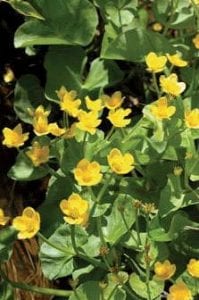Plants that grow in and under the water are part of our surroundings, whether we are fishing, swimming or just sitting on the shore. A diversity of aquatic habitats makes for healthy lakes, rivers and wetlands that are home to a variety of fish, birds and wildlife.
Unfortunately, some people see aquatic plants as problems or weeds. But aquatic plants are an essential part of a water ecosystem. They provide food for fish and are a refuge for insect larvae, snails, and freshwater shrimp, which, in turn, nurture waterfowl.
Many submerged plants produce seeds and tubers (roots) that also are food for waterfowl.
Aquatic plants offer shelter for young fish including walleye, bass, and pike, and less familiar, though equally important, prey species like minnows and perch. Bass, sunfish, and yellow perch nest in vegetated areas. Northern pike spawn in marshy and flooded areas in early spring.
In addition to providing habitat, aquatic plants absorb and break down polluting chemicals and the nutrients that cause algae blooms. They dampen the force of waves, help prevent shoreline erosion, and stabilize sediment.
The visual appeal of a lakeshore is enhanced by aquatic plants, which are a natural, critical part of a lake community. Many people enjoy the flowers and leaves of water lilies, arrowhead, and pickerelweed.
Beaches and docks affect these aquatic habitats. Consider limiting the size of beaches and docks to meet your recreational needs while minimizing disturbance to aquatic plants and wildlife. Maintaining shoreland buffers of native vegetation will also limit the amount of nutrients that might feed excess aquatic plant growth.
Everything we do on the land impacts our waters. Learn how you can help at the Minnesota Department of Natural Resources Web site at www.mndnr.gov.



Loading Comments